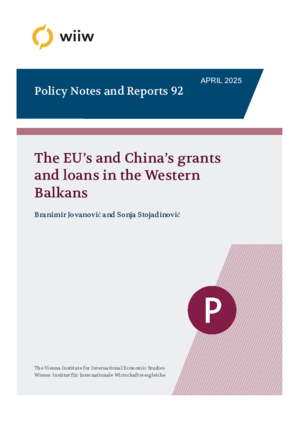The EU’s and China’s grants and loans in the Western Balkans
Branimir Jovanović and Sonja Stojadinović
wiiw Policy Note/Policy Report No. 92, April 2025
37 pages including 10 Tables and 7 Figures
This note examines the grants and loans provided by the European Union (EU) and China to the Western Balkan economies. The EU remains dominant in grant funding, with annual Instrument for Pre-accession Assistance (IPA) grants averaging 0.8% of the region’s GDP, far above the 0.02% of GDP from Chinese grants. In terms of loans, however, China has nearly caught up with the EU. On an annual basis, the EU has committed loans equal to approximately 1.5% of the region’s GDP, while China has provided loans in the amount of 1.2%. Notably, in Serbia, China’s loan portfolio now exceeds the size of the EU’s. EU loans are cheaper and more transparent but come with stricter conditions for implementation and requirements for institutional reforms. In contrast, Chinese loans are more flexible and quicker to implement, making them appealing to Western Balkan politicians. However, this flexibility comes at a cost, as Chinese loans are significantly more susceptible to corruption, often deliver questionable quality, and have been linked to various drawbacks, such as workers’ rights violations and environmental degradation.
Keywords: EU, China, Western Balkans, grants, loans, investment
JEL classification: F21, F35, H81
Countries covered: Albania, Bosnia and Herzegovina, Kosovo, Montenegro, North Macedonia, Serbia, Western Balkans
Research Areas: Macroeconomic Analysis and Policy
